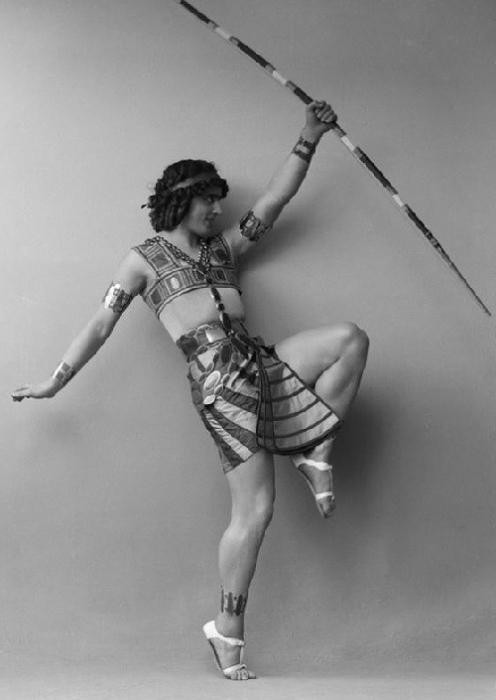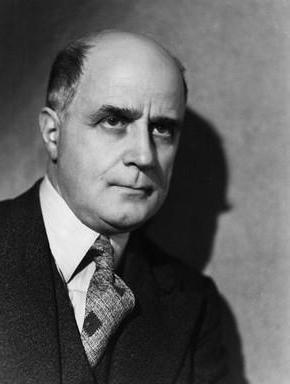Modern ballet is impossible to imagine without Mikhail Fokin. He had a revolutionary influence on this art form. The outstanding ballet reformer who became the basis for the glory of the Russian school throughout the world in the 20th century is Mikhail Fokin. He lived a vibrant life. The formation of the artist took place in difficult times, but this did not break his spirit and only strengthened his faith in the power of art.
Childhood
Mikhail Fokin, whose brief biography cannot fit in a few words - the progenitor of modern ballet, began his journey in an environment far from dance. He was born into the family of a wealthy merchant, and his father categorically did not want to see his son as a dancer. But the mother, obsessed with ballet art, managed to resist the opinion of her husband. She gave her son to a choreographic school, to the class of the representative of the famous ballet dynasty Nikolai Legat, especially since the boy had magnificent natural inclinations. Also, Misha's teachers were Pavel Gerdt and Plato Karsavin, outstanding dancers of their time. The St. Petersburg School attached exceptional importance to ballet technique, and the students spent long hours in the classrooms and also participated in the productions of the Mariinsky Theater. Therefore, the main formation of Mikhail Fokin took place in a ballet environment, he was imbued with the spirit of the classical school, seeing its advantages and disadvantages.

Family education helped the little dancer to get basic knowledge of music and drawing and develop his natural abilities, in the future, Michael even seriously thought about his artistic career. And, of course, this knowledge was useful to him when working as a director.
Ballet career
Fokin began performing on the great stage of the Mariinsky Theater in his school years, he was involved in the performances of The Nutcracker and The Sleeping Beauty. After graduation, he was enrolled in the troupe of the theater, and he quickly grew up to be a soloist, performing roles in Corsair, Sleeping Beauty, Flora Awakening and other productions.
However, the dance did not give him a feeling of fullness of life, he saw himself as a director. Watching the work of the outstanding choreographers M. Petipa and L. Ivanov, Mikhail Fokin developed his own view of classical ballet, and he developed a firm opinion about the need to modernize the dance.
Mikhail Fokin: innovative choreographer
The first productions Fokin entrusted while studying at the school. But he became a real choreographer only in 1905, and later will be officially accepted for the position of director at the Mariinsky Theater. Studying the dance system of M. Petipa, Fokin begins to formulate his own theory. While still a novice dancer, he writes a letter to the theater management with proposals for the reform of ballet performances, but then he was simply not paid attention to.
The first notable works appeared in 1907-08: “Egyptian Nights”, “The Dying Swan”, “Chopeniana”, when the outstanding ballet master Mikhail Fokin became more and more famous. Biography changes dramatically after his meeting with Sergei Diaghilev. The entrepreneur invited the director to take part in the creation of ballet performances for a tour in Paris. For three years, Fokin is the only choreographer of the Russian seasons, over the years he was able to gather an outstanding team around him, which included A. Benois, L. Bakst, Anna Pavlova, V. Nizhinsky, I. Rubinshtein, T. Karsavina. He creates his outstanding works, which still delight the audience. These are the performances of Scheherazade, Carnival, The Firebird, The Underwater Kingdom, Narcissus, The Blue God, The Phantom of the Rose, and the pinnacle of creativity is Petrushka to the music of I. Stravinsky.

Until 1918, Fokin combined work with Diaghilev with productions at the Mariinsky Theater, but events in Russia forced him to leave the country, eventually he moved to the USA, where he opened the first ballet school and staged performances with Russian music: Russian Holidays, Thunderbird , “Paganini” to the music of S. Rachmaninov and “Russian Soldier” by Prokofiev. In total, Fokine has staged 70 ballets in his life, each of which has its own finds. He instills in America a love of classical ballet, forming a national school and tradition. Fokine's ballets became a real asset of the art of dance in the 20th century, he was able to create his own school and made a number of discoveries.
“Against the current”: reform ideas of Mikhail Fokin
At the beginning of the 20th century, ballet was going through hard times, it was considered a dying art, it needed a new impetus for development. The dance needed a new creator and savior, and Mikhail Fokin became such a choreographer for Russian ballet. The work of this artist forever changed the idea of classical dance and gave the ballet a new impetus to development. Fokin’s reform was that he proposed to create not separate dances, but integral works in which plastic, music and scenery were harmoniously combined. Also, his merit was the revival of the male dance, which had already completely disappeared by then. He creates new genres: miniature ballets, plotless plastic sketches.
Collaboration with the great
In his work, Fokin tried to collaborate only with like-minded people, people in love with art. He was inspired by the ideas of the World of Art club and actively attracted outstanding artists to create his performances. A separate topic in the biography of the choreographer is the tandem: Mikhail Fokin and Anna Pavlova. Together they began to work on the play "Chopiniana", which fully demonstrated the genius of both creators.
Another significant success of Fokin was the discovery of Vaclav Nizhinsky, whom he saw in the classroom and invited him to his performance. For several years, the dancer was busy in every performance of Fokine.
Private life
The life of geniuses is often difficult to combine with family life, but there are lucky people who manage to combine this, that was exactly Mikhail Fokin. The director’s wife, ballerina Vera Antonova, participated in the performances of Fokin, she gave birth to a son, the choreographer, and also helped her husband all her life.
In particular, with its help, a ballet school was opened in New York, in which Fokine worked until the end of his life.